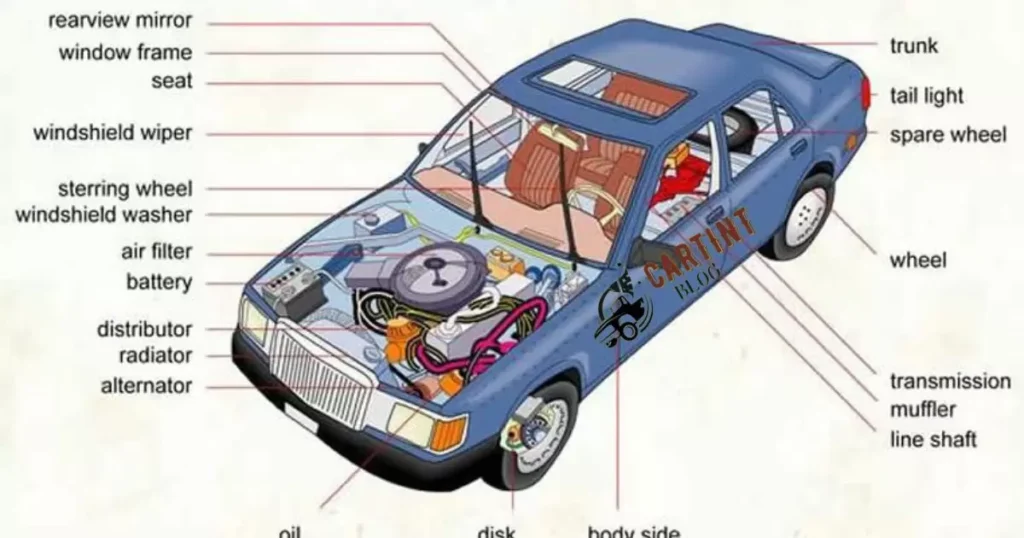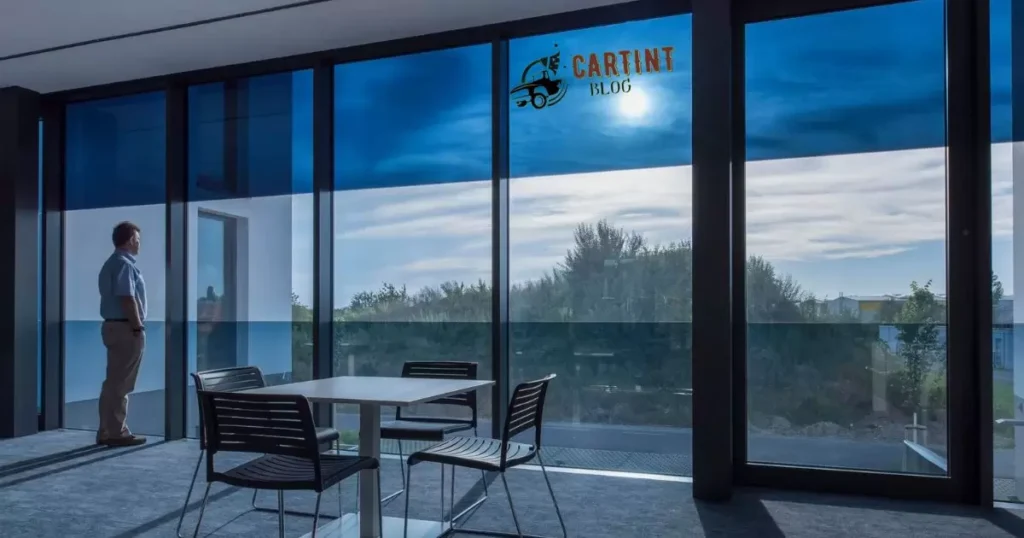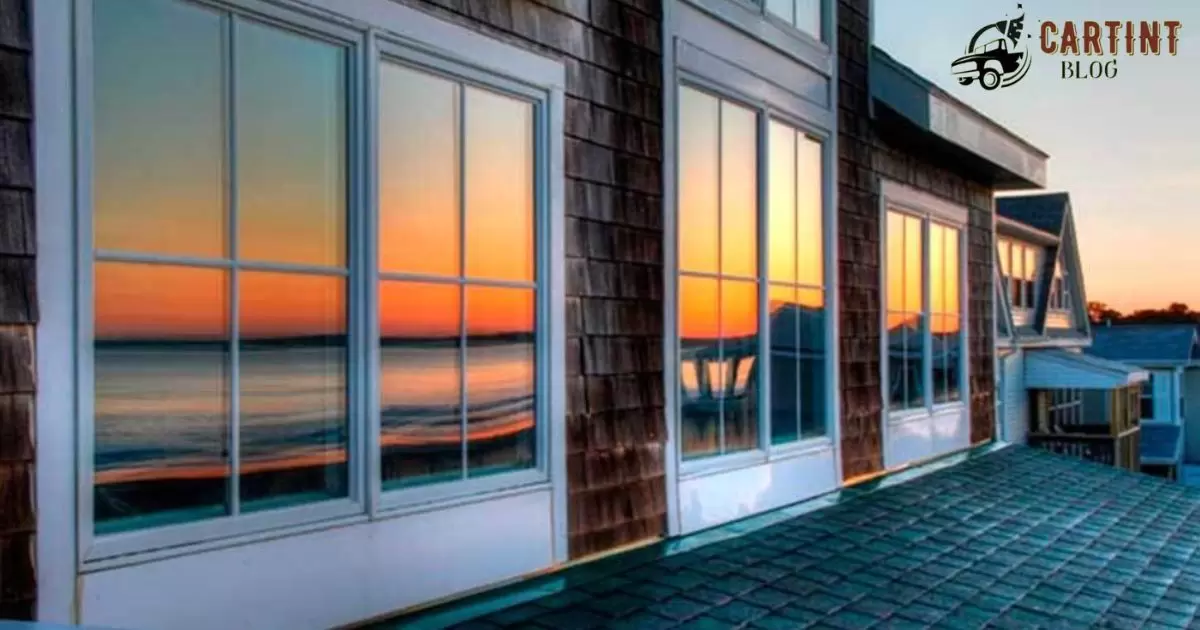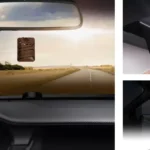Window tint material refers to the film applied to windows for various purposes. The best material offers heat and UV ray reduction, enhancing privacy, and protecting interiors. It should be durable, scratch-resistant, and legal as per local regulations. High-quality materials ensure optimal performance and longevity when professionally installed.
Are you pondering over the question, What is the best window tint material? Unveiling the secret to optimal window enhancement lies in exploring the ideal material for your needs. Dive into the world of window tinting to discover the ultimate solution that balances durability, functionality, and performance.
Discovering the ideal window tint material is crucial for a comfortable and protected space. Stay with us to unravel the features and benefits of top-quality materials that elevate privacy, reduce glare, and shield against UV rays. Learn why choosing the right tint material matters for a safer and more enjoyable environment.
Why Do We Choose Particular Brands And Series Of Carbon And Ceramic Films?
We pick specific brands and series of carbon and ceramic films for our windows due to their superior qualities. These films excel in reducing heat, blocking UV rays, and enhancing privacy without compromising visibility.
Consumers favour these brands and series because they promise durability, exceptional performance, and compliance with local tinting regulations.The selection of particular carbon and ceramic film brands and series relies on their proven track record.
These films stand out for their reliability in maintaining a comfortable indoor temperature, protecting interiors from sun damage, and offering a sleek appearance. People opt for these specific brands and series due to their reputation for delivering high-quality window tinting solutions.
Ceramic Vs Carbon Tint. Let’s Compare The Numbers
| Features | Ceramic Tint | Carbon Tint |
| Heat Reduction | Excellent | Very Good |
| UV Ray Blockage | High | High |
| Visibility | Optimal | Good |
| Durability | Very High | High |
| Cost | Higher | Moderate |
| Installation | More Complex | Easier |
| Color Options | Limited | Wide Range |
| Signal Interference | Minimal | Minimal |
This table compares Ceramic Tint and Carbon Tint across various features like heat reduction, UV ray blockage, visibility, durability, cost, installation complexity, colour options, and signal interference.
Ceramic Window Tint Film The Best Quality And Durability, But The Higher Price
Ceramic window tint film stands out for its top-notch quality and durability, making it a premium choice. It offers exceptional heat reduction and UV protection without compromising visibility. However, its superior performance comes with a higher price tag compared to other tint materials.
Investing in ceramic window tint ensures long-lasting protection for your vehicle or home windows. Its advanced technology provides excellent heat rejection while maintaining optical clarity. Although it may be pricier, its durability and performance make it a worthwhile choice for those seeking top-quality window tinting solutions.
Carbon Window Tint Film The Darkest Tint Ever
Carbon window tint film stands out as the darkest option available, offering unparalleled privacy and UV protection. This film’s carbon construction ensures exceptional heat rejection while maintaining visibility for a comfortable driving experience.
Its darkness level exceeds traditional tints, making it an optimal choice for those seeking maximum shade and enhanced interior comfort.The deep shade of carbon window tint film makes it a popular choice among individuals prioritizing privacy without compromising visibility.
Its advanced composition not only blocks harmful UV rays but also minimizes interior heat, contributing to a cooler and more enjoyable atmosphere within the vehicle. Choose carbon window tint film for the ultimate balance between darkness, UV protection, and interior comfort.
Common Advantages Of Ceramic And Carbon Window Tints

Ceramic and carbon window tints offer several shared benefits. They both excel at blocking UV rays and reducing glare, enhancing both comfort and safety within a vehicle or a building. These tints provide excellent heat reduction, keeping interiors cooler during hot days without compromising visibility.
Their durability stands out; both ceramic and carbon tints are resistant to fading, ensuring a longer lifespan compared to traditional tints. They maintain their colour and effectiveness over time, providing consistent performance and maintaining a sleek appearance. Investing in either ceramic or carbon window tints guarantees lasting protection and comfort.
Benefits Of Car Window Tinting
- UV Protection: Shields occupants from harmful UV rays, reducing the risk of skin damage and interior fading.
- Heat Reduction: Keeps the interior cooler by minimizing heat buildup, enhancing comfort, and reducing the need for excessive air conditioning.
- Glare Reduction: Reduces glare from sunlight, improving visibility and reducing eye strain for safer driving.
- Privacy Enhancement: Increases privacy by limiting visibility into the vehicle, enhancing security for passengers and belongings.
- Interior Preservation: Protects the interior from sun damage, prolonging the lifespan of upholstery and other materials.
- Safety: Holds shattered glass together in case of breakage, reducing the risk of injuries from flying glass particles in accidents.
- Aesthetic Appeal: Enhances the overall look of the vehicle, providing a sleek and polished appearance.
What Is The Best Film For Car Window Tinting?
Choosing the best film for car window tinting involves considering various factors. Look for films that offer UV protection, heat reduction, and privacy without compromising visibility. Opt for trusted brands with durable materials that comply with local tinting regulations for a seamless and effective tinting experience.
Different films cater to specific needs, such as ceramic films for maximum heat rejection or dyed films for budget-friendly options. Assess your priorities whether it’s glare reduction, aesthetics, or overall performance to select the ideal film that enhances both style and functionality for your car’s windows.
Leave It Up To A Professional
For installing many feet of tint for car windows, relying on a professional is crucial. Experts ensure precise placement and lasting quality. Their skill guarantees a seamless finish, ensuring optimal performance for your window tinting needs. Trust the pros for flawless, long-lasting results in tinting your car windows.
Professionals excel in understanding the nuances of window tinting. They bring expertise that ensures the right materials and techniques are used. Their hands-on approach guarantees a flawless finish that meets your specific requirements. Count on professionals for a hassle-free and top-notch window tinting experience.
What Kind Of Window Tint Should I Choose?
When deciding on window tint, consider your priorities. Reflect on your needs: whether it’s reducing glare, enhancing privacy, or minimizing heat. Opt for a tint that suits your preferences while adhering to local regulations for a hassle-free choice.
Different tints offer varying benefits. For instance, dyed films reduce glare, while metallic tints excel in heat reduction. Ceramic tints, on the other hand, provide optimal UV protection without interfering with signals. Pick the tint that aligns best with your specific requirements for a tailored solution.
Which Parts Of The Car Should Not Be Tinted?

When tinting your car, it’s essential to avoid applying tint to certain areas. The windshield and front side windows should not be tinted excessively, as it can impede visibility, leading to safety hazards. Some states have regulations restricting the darkness of tint on these specific car parts to ensure driver visibility and law compliance.
Another area to avoid tinting is the rear window if your vehicle lacks functioning side mirrors. Tinting this window excessively could limit rear visibility, posing risks while driving. Understanding which parts of the car should not be tinted ensures compliance with legal requirements and prioritizes safety on the road.
6 Car Tint Types And Their Differences
- Dyed Window Tint: Uses a dye layer to absorb heat, offering moderate heat reduction and glare reduction.
- Metallic Window Tint: Incorporates metallic particles for superior heat rejection and durability but may interfere with electronic signals.
- Carbon Window Tint: Utilizes carbon particles for heat reduction without signal interference and provides a matte finish.
- Ceramic Window Tint: Offers high heat rejection, UV protection, and clarity without interfering with signals, though it’s relatively expensive.
- Crystalline Window Tint: Provides excellent clarity, UV protection, and heat reduction without a dark appearance, ideal for visibility.
- Privacy Window Tint: Focuses on enhancing privacy with varying opacity levels, offering limited visibility from outside.
What Is The Best Window Tint For Driving At Night?
Choosing the right window tint for night driving matters. Opt for tints with lower VLT (visible light transmission) percentages to minimize glare without compromising visibility. Look for films that enhance contrast and clarity, ensuring a safer drive by reducing the dazzling effect of headlights from other vehicles.
Finding the best window tint for night driving involves selecting options that prioritize visibility while still offering the desired level of glare reduction.Window tints specifically designed for night driving focus on maintaining a clear view of the road.
Consider tints with anti-glare properties that diminish the intensity of headlights, promoting better vision without impairing your ability to see in low-light conditions. Balancing reduced glare with adequate visibility, these specialized tints enhance the overall safety and comfort of nighttime journeys.
At What Percentage Do Tints Look Best?
The best appearance for tints usually lands around 35% to 50%. At these percentages, windows strike a balance providing a sleek look while maintaining visibility and functionality. Higher percentages offer more privacy, but they might also limit visibility, especially at night.
Opting for this range ensures a stylish look without compromising your view or legal compliance.Finding the perfect tint percentage depends on personal preference and local regulations.
Experimenting within the 35% to 50% range allows you to tailor the tint to your liking, achieving an aesthetic appeal while ensuring practicality for day and night driving. Balancing style and function, these percentages often offer the ideal tint appearance.
Does Window Tint Get Darker With Age?
Window tint typically darkens over time due to exposure to sunlight and other environmental factors. UV rays can cause the tint to oxidize, leading to a darker appearance. This gradual darkening is a natural process, and while it enhances privacy and UV protection, it might affect visibility for some.
Regular maintenance and cleaning can slow down this darkening process. However, it’s important to note that the level of darkness might plateau after a certain point, and further ageing may not significantly deepen the tint. The darkening of window tint with age is a result of exposure to the elements and UV rays.
How Do I Know If My Window Tint Film Is Of Poor Quality?
Identifying low-quality window tint film is easy. First, check for signs of bubbling or peeling along the edges—this suggests inferior adhesive. Next, observe any discoloration or fading, indicating poor UV resistance.
Lastly, if the tint doesn’t effectively reduce glare or heat, it might be of subpar quality. Look out for these telltale signs to ensure your window tint film meets the desired standards.Poor-quality window tint film exhibits specific characteristics.
Watch for bubbling, peeling edges, or an uneven application; these are clear indicators of inferior material. Any rapid discoloration or fading under sunlight signals inadequate UV protection. If the film fails to block heat or glare effectively, it likely signifies poor-quality window tint.
What Window Tint Lasts The Longest?
When seeking the longest-lasting window tint, consider durable materials like ceramic and dyed films. Ceramic tints boast exceptional longevity due to their robust composition, resisting fading and discoloration over time. Dyed films, while less pricey, offer decent durability and can last for several years with proper care and maintenance.
Regular maintenance, such as gentle cleaning with non-abrasive materials, prolongs the lifespan of your chosen window tint. Investing in high-quality materials and upkeep ensures that your tint endures for an extended period, offering lasting protection and performance for your windows.
How Do You Maintain Window Tint?

Maintaining window tint is simple and keeps it looking pristine. Firstly, use a mild cleaning solution and a soft cloth to gently wipe the tinted surface. Avoid harsh chemicals or abrasive materials that could damage the tint.
Secondly, regular cleaning, especially with gentle products, prevents dirt buildup and maintains the tint’s clarity and functionality. Regular care ensures your window tint stays in top-notch condition for years to come.Avoiding sharp objects or rough cleaning materials prevents scratches.
It’s also wise to refrain from rolling down newly tinted windows for a few days to let the adhesive set properly. Simple precautions and regular, gentle cleaning are key to preserving the quality and longevity of your window tint.
Understand Your Best Options For Window Tinting
Looking into window tinting? It’s crucial to know your options! Window tinting offers various benefits like reducing glare, enhancing privacy, and protecting against UV rays. Understanding your best choices empowers you to select the right tint that suits your needs perfectly.
Consider factors such as tint darkness levels, types of materials, and local regulations. These choices impact the tint’s effectiveness and legal compliance. Familiarizing yourself with your options ensures you make an informed decision, achieving the best results for your windows.
Main Differences In 3m Crystalline & 3m Ceramic Ir Tints
3M Crystalline and 3M Ceramic IR tints stand out for their unique qualities. Crystalline excels in clarity, offering maximum heat rejection without the dark appearance of traditional tints. On the other hand, Ceramic IR tints provide exceptional heat reduction by blocking infrared rays while maintaining a natural look.
The key differences lie in their approach: Crystalline focuses on clarity and UV protection, ideal for those seeking transparency with effective heat rejection. Ceramic IR tints prioritize infrared blocking, perfect for those wanting optimal heat reduction while maintaining a neutral appearance.
Best Car Window Tint For Heat Reduction
Looking for the best car window tint to beat the heat? Opt for tint films designed explicitly to minimize heat buildup inside your vehicle. These specialized films efficiently block infrared rays, keeping your car cooler during scorching days and reducing the need for excessive air conditioning.
Selecting the right window tint can significantly enhance your driving experience by creating a more comfortable interior temperature. Look for tints with high heat rejection properties, as they effectively reflect heat away, ensuring a cooler ride while also preserving your car’s interior from sun damage.
FAQ’s
What window tint is best?
The “best” tint depends on needs. Ceramic excels in heat reduction, while carbon offers good performance and cost-effectiveness.
Is ceramic or carbon tint better?
Ceramic offers superior heat reduction, but carbon provides solid performance and value for money.
What is the best grade of window tint?
Opt for a high-quality film with good heat rejection, UV protection, and durability for the best results.
What type of tint lasts the longest?
Ceramic tints are known for longevity due to their durable nature and resistance to fading or degradation.
Conclusion
In the quest for the best window tint material, prioritizing your specific needs is key. Understanding the features that matter most whether it’s UV protection, privacy enhancement, or durability guides you toward the perfect choice.
It’s about finding the ideal balance between functionality, durability, and compliance with local regulations. By delving into the qualities of different materials, you empower yourself to transform your windows into assets that enhance comfort, privacy, and protection all achieved by choosing the right window tint material for your unique requirements.



